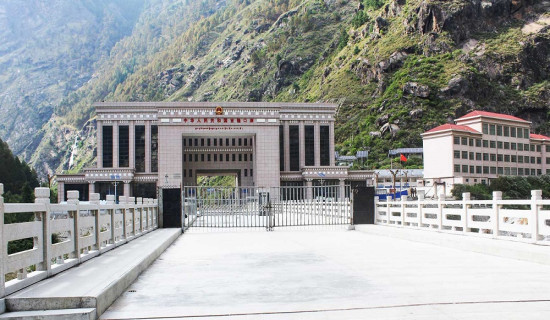- Sunday, 4 January 2026
Make Nepali Sky Safe
Nepal's aviation sector has experienced several significant safety incidents in recent years. This includes recent tragic crash of a domestic flight, resulting in the loss of 18 lives and a chopper crash that killed five persons. This has brought the issue of aviation safety to the forefront, emphasising the pressing need to address aircraft safety concerns. Even a small oversight in an aircraft can have disastrous consequences, underscoring the importance of adhering to stringent safety standards. The inadequate road conditions have led to more people opting for domestic air travel, further highlighting the critical need to implement strict safety measures and to study safety deficiencies more clearly.
Nepal's aviation authorities grapple with substantial safety challenges due to the country's distinctive geographical and infrastructural constraints. The rugged terrain poses significant navigation and emergency response hurdles. Constant advancements in aviation technology demand regular updates to safety protocols and training. The escalating number of flights adds even more pressure to manage air traffic effectively. Furthermore, there's a critical need for enhanced infrastructure and resources to address maintenance and safety standards. Airports have suffered from deteriorating runways, inadequate lighting, and outdated navigation aids, jeopardising landing and takeoff safety and heightening the risk of accidents. Unpredictable weather patterns and natural hazards also pose additional threats to aviation safety.
Additionally, managing the growing volume of air traffic demands robust coordination and communication to avert collisions and ensure timely responses to emergencies. Addressing these challenges requires tailored solutions to guarantee safe and efficient air travel. The aviation industry is facing lots of emerging threats that require an instant response through the implementation of new protocols and technologies. One key area for improvement is the implementation of more rigorous maintenance and inspection standards to facilitate better decision-making. The aircraft industry can strike a balance between economic considerations and safety standards by investing in predictive maintenance systems.
Usually, the financial limitations have impelled to reduce investment in essential repairs, inspections, and upgrades, which in turn has compromised the safety and performance of aircraft potentially increasing the risk of malfunctions or accidents. Likewise, the development of improved weather forecasting and real time weather monitoring tools is also crucial to mitigate the unpredictable weather-related risk. The aviation authorities must employ several strategies that enable pilots to engage in more precise flight planning and adjustments, enhancing safety by facilitating proactive responses to changing weather conditions and minimising potential disruptions to flight operations.
Human errors have also played a significant role in aviation incidents, often stemming from misjudgment, miscommunication, or procedural lapses. Maintaining high levels of training and proficiency among pilots and crew has always been challenging for the aviation industry. Therefore, robust training systems and frequent assessments are necessary to ensure that pilots and crew remain skilled and prepared to stay up to date with new systems to mitigate with errors. Adding on, the long operational hours, irregular schedules, and high-stress environments for pilots has thereby increased the risk of accidents. Airlines and regulatory bodies must optimise flight schedules to ensure that pilots remain alert and effective throughout their flights.
The aviation sector requires a comprehensive approach involving stringent safety standards, enhanced infrastructure, advanced technologies, improved maintenance and inspection protocols, and robust training systems. Furthermore, collaboration among governments, airlines, and industry stakeholders is also essential to maintain high safety standards and effectively respond to emerging threats. By implementing these measures and working together, Nepal can significantly improve aviation safety and ensure the well-being of passengers and crew in the coming days.

















